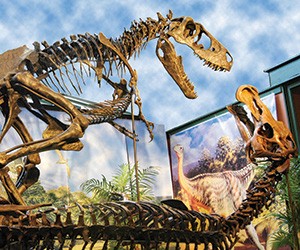"Warm, friendly, all-American hospitality” is how Susie Santo, president and CEO of the Greater Wichita CVB, describes visitors’ first impression of her city. “When someone asks how you’re doing, they really want to know. There’s a sense of community—it’s really people-driven hospitality.”
Part of this warmth may come from Wichitans’ knowledge that their city has prospered in every era since its founding.
From modest beginnings as a river crossing along the Chisholm Trail cattle route, Wichita only grew with the discovery of oil nearby in the early 20th century, which generated extra cash to invest in the budding airplane business. Aircraft innovation continues to the present day, helping lead to Wichita’s position as Kansas’ largest city and the “air capital of the world.”
“You go back to the roots with the cowboys and cattle drives, but then there are the modern amenities [from] aviation and a large city,” Santo says.
The Red-Brick District in Old Town is where many Wichitans work by day, but it turns into a playground at night, teeming with retail stores, bars and all types of restaurants. The Intrust Bank Arena provides an additional draw and is looking forward to hosting Taylor Swift this August. And while art galleries are found across the city, there’s a major concentration of them in the Commerce Street Art District, a collection of older warehouses that have found new life as artist galleries.
Located at the confluence of the Kansas and Little Arkansas rivers, Wichita has spent some $20 million on riverbank improvements since 2009 to make this area more bike- and pedestrian-friendly. Several of the city’s marquee cultural venues cluster among the 14 miles of trails and walkways here in what is now known as the Museums on the River district.






